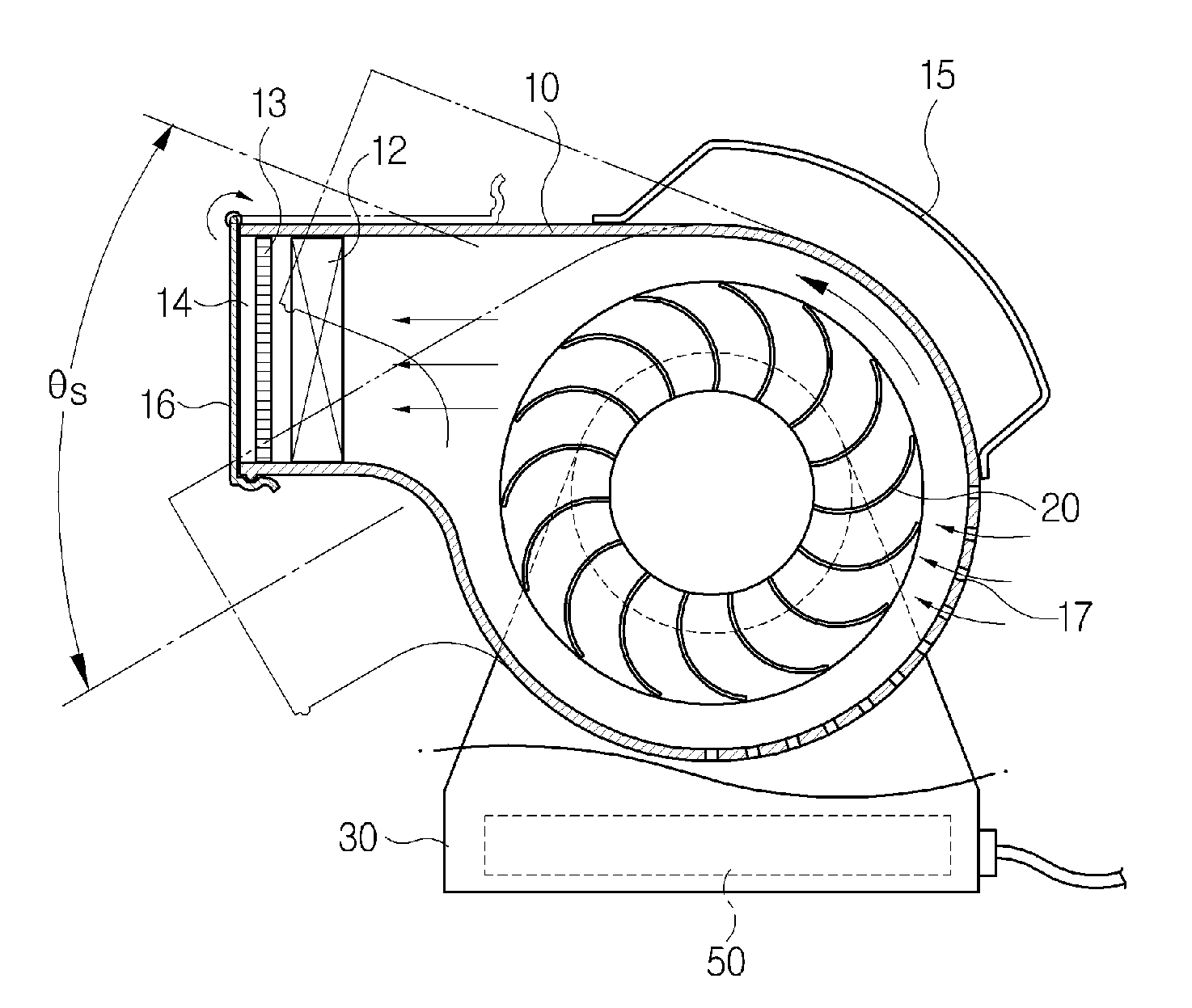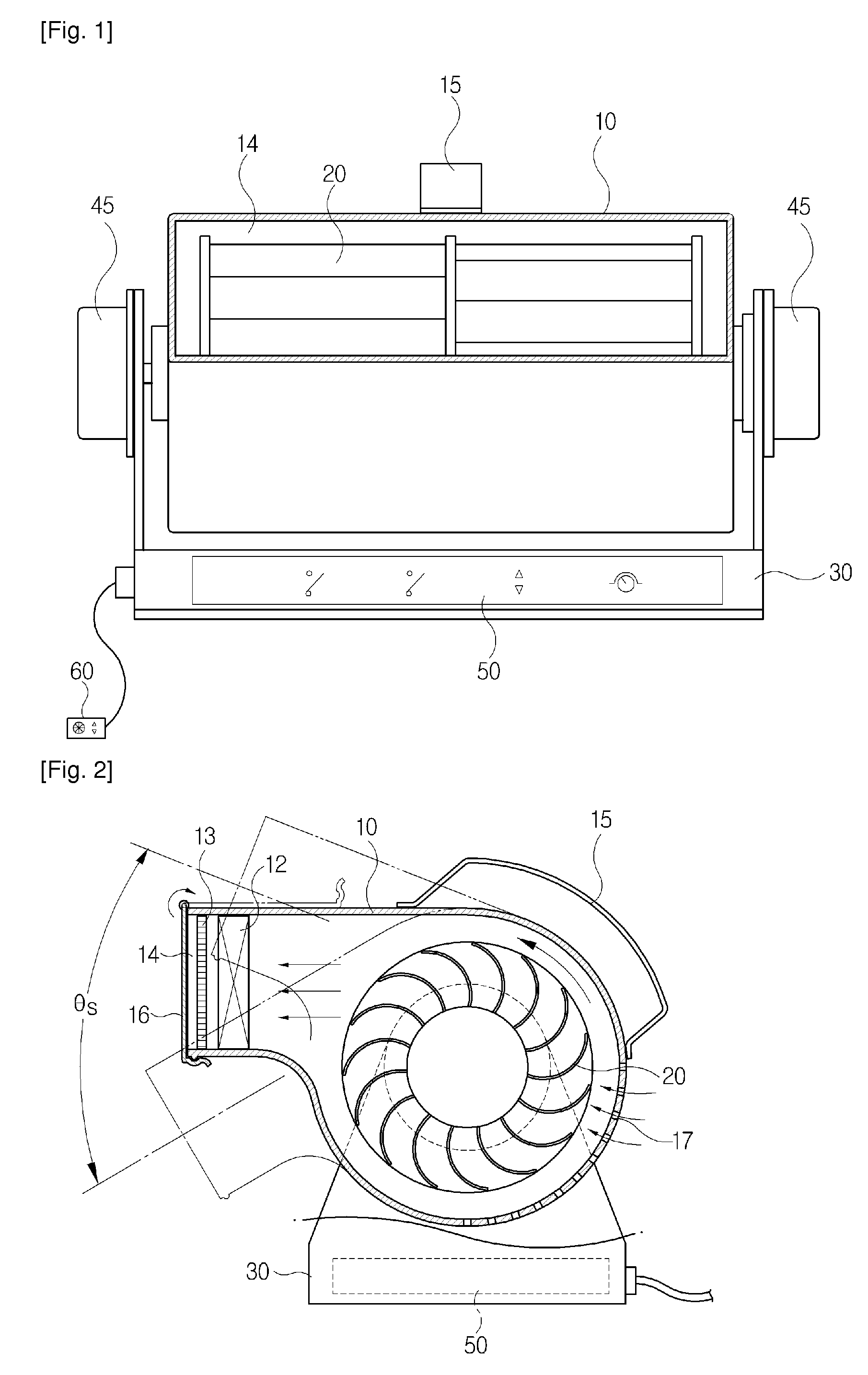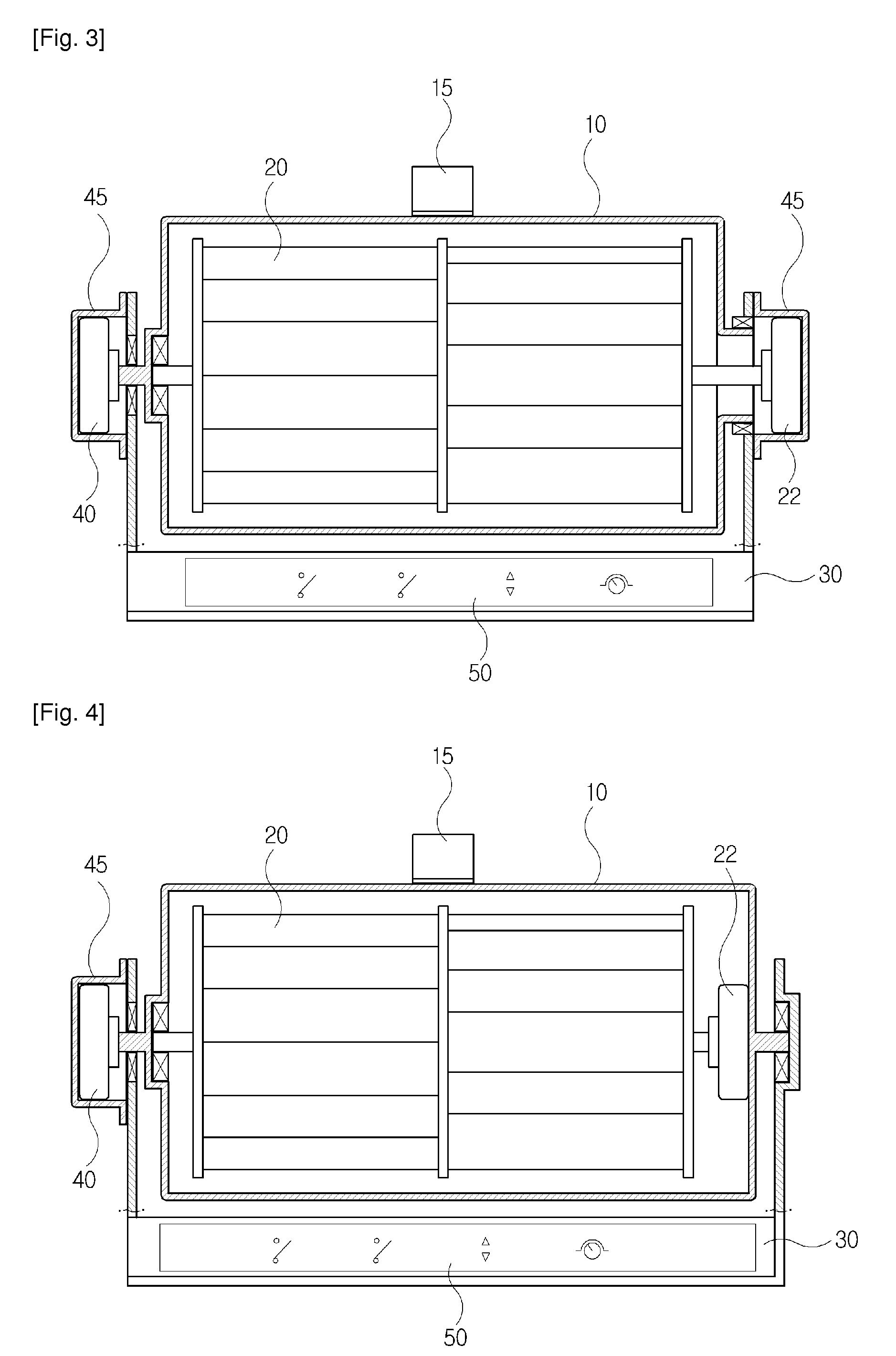Drying apparatus for pet
- Summary
- Abstract
- Description
- Claims
- Application Information
AI Technical Summary
Benefits of technology
Problems solved by technology
Method used
Image
Examples
first embodiment
[0041]FIG. 1 is a frontal view illustrating the structure of a cross-flow drying apparatus for a pet according to a first embodiment of the present invention, FIG. 2 is a state diagram schematically illustrating the operation of a cross-flow drying apparatus for a pet according to the first embodiment of the present invention, and FIG. 3 is a schematic view illustrating the structure of a cross-flow drying apparatus for a pet according to the first embodiment of the present invention.
[0042]As illustrated, a drying apparatus for a pet according to the present invention includes a main body case 10, a cross-flow fan 20, and a stand 30.
[0043]The main body case 10 defines a rectangular outlet 14 that projects at one side. A heating member 12 is installed in the inside of the outlet 14. Here, an outlet grill 13 for preventing impurities of a predetermined size from entering may be installed between the outlet 14 and the heating member 12. Also, an outlet cover 16 is hinged to the opening...
second embodiment
[0061]FIG. 7 is state diagram illustrating the structure of a drying apparatus for a pet according a fourth embodiment of the present invention, FIG. 8 is a partial sectional view of a drying apparatus for a pet according to the fourth embodiment of the present invention, FIG. 9 is an operating state view of a drying apparatus for a pet according to the fourth embodiment of the present invention, FIG. 10 is a schematic view illustrating the structure of a portion of a drying apparatus for a pet according to the fourth embodiment of the present invention, FIG. 11 is a schematic view illustrating the structure of a swing motor of a drying apparatus for a pet according to the present invention, FIG. 12 is a schematic view illustrating the structure of a tension ball of a drying apparatus for a pet according to the present invention, FIG. 13 is a schematic view illustrating lateral rotation of a drying apparatus for a pet according to the present invention, and FIG. 14 is a schematic vi...
PUM
 Login to View More
Login to View More Abstract
Description
Claims
Application Information
 Login to View More
Login to View More - R&D
- Intellectual Property
- Life Sciences
- Materials
- Tech Scout
- Unparalleled Data Quality
- Higher Quality Content
- 60% Fewer Hallucinations
Browse by: Latest US Patents, China's latest patents, Technical Efficacy Thesaurus, Application Domain, Technology Topic, Popular Technical Reports.
© 2025 PatSnap. All rights reserved.Legal|Privacy policy|Modern Slavery Act Transparency Statement|Sitemap|About US| Contact US: help@patsnap.com



